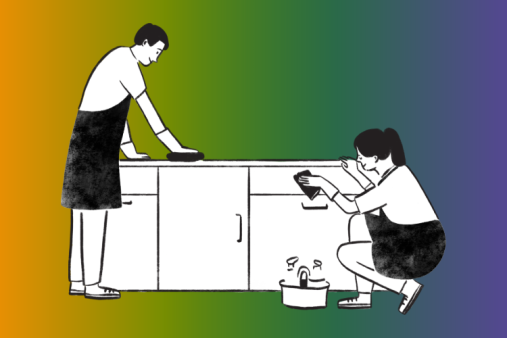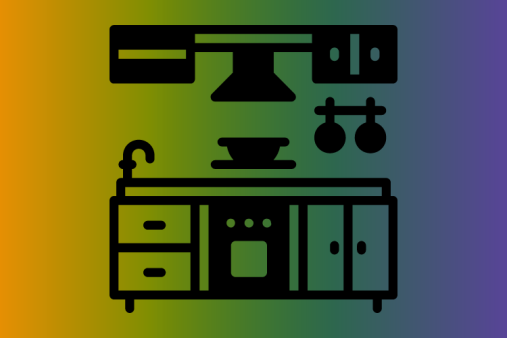Considering Buying a Kitchen Online
Even before the Covid-19 pandemic hit, British shoppers were moving away from traditional methods of buying. The pandemic has accelerated this move, with online shopping booming. Retailers are making it easier than ever to get what you need in a few clicks, delivered straight to your door on a day of your choice. But when it comes to a big investment like a kitchen, is this even an option?
What’s Wrong With Traditional Kitchen Showrooms?
The easy answer to this is nothing. There is still a huge market for people who want to have someone else take care of the whole process from them. A decent kitchen showroom will employ staff whose job it is to walk you through the entire process from coming up with a basic design for your kitchen, pointing out any potential flaws in a design which you have created, through to providing a wide range of cabinets and tiles, and fitting and installation services too. It’s the no-hassle, one stop shop option. But kitchen designers need to be paid for their work, and big showrooms cost money to rent and maintain, which often makes this the expensive way of doing things. One of the main reasons people explore the do-it-yourself approach is to cut costs; if you’re taking on the designing and sourcing of a kitchen yourself, you may well be able to do it considerably more cheaply.
Where to Start with Kitchen design
The design stage is the most important when buying a kitchen online and something you should take some time over. There are lots of kitchen design tools online which are often free to use and will let you revise your design as many times as you need to get the perfect layout for you. Before you even start playing with websites and software, measure the space accurately. Although the traditional tape will work, it’s perhaps better to spend some money on a laser measuring tape like the ones used by estate agents or professional kitchen designers. Accuracy at this point is key to a professional end result, so take your time, measure several times, and record your measurements accurately. The old adage of “measure twice cut once” is never as true as when buying a kitchen.
Once you have your measurements, you can then enter them into an online site – or even draw a plan on a piece of paper if you’d prefer to go old school – and start to think about what might fit where. Mark on your plan where you have taps or electric switches. Then you can start planning where you want your cooker, sink, dishwasher and other appliances, then fit the rest of the cupboards around them. Cupboards and appliances are cold in standard widths to help make planning easy. Many high street stores will have their own kitchen planning sites but make sure that the sizes are standard, especially if you are not planning to buy units from the same retailer, or thinking about mixing and matching from several retailers.
Buying the Kitchen
Before you finalise your design, get a few friends to look at it and see if they can spot any issues or suggest any improvements. If you’ve been very close to a design, it can be difficult to spot potential drawbacks. Once you are sure you have the best layout and combination of units, then it’s time to go shopping. Unlike traditional kitchen design where you buy everything from the same retailer, online shopping opens up a whole new range of possibilities. As long as you stick to the measurements and dimensions which you have calculated, there’s no reason why you can’t source a second-hand worksurface, ex-display appliances, and units from a high-street retailer. This might all take a bit longer, but allows you to design the perfect kitchen for your needs. Shopping in this way could also mean you have deliveries arriving at different times, something to think about if you’re struggling for storage. Put together a checklist of everything from cupboards to flooring and taps, and mark them off your list after you have had them delivered.
Installation and Removal of the Old Kitchen
After everything has been delivered, then it’s time to get to the exciting stage of the project and have it all fitted. Removing the old kitchen is the first stage, and you should be able to do much of it yourself. Depending on the state of your old kitchen, you might even be able to sell some of it on Gumtree or Facebook Marketplace. If not, hire a skip and start dismantling. Get professionals in to deal with disconnecting electrics and water, removing the cabinets, flooring and existing work surfaces is not tricky, just messy and tiring. Project management is the key here, and it will pay off in the long run to spend some time writing a list of all the jobs which need to be done, and in which order. This should also help you book the additional trades you might need to help you with things like plumbing or electrics.
Fitting a kitchen is not a task for the faint-hearted, but is a task which many competent DIYers will be happy to take on. For most of us though, we want the job done quickly and professionally, and therefore will be happy to pay someone else to come in and do it for us. If you are planning to take this approach then the time to look for a great fitter is at the planning stage, not once you’ve bought all the kitchen and it’s sitting in boxes in the garage. Recommendation is the best way to go, so ask your friends, neighbours and acquaintances to recommend people who have done similar work in their own homes. If you are struggling to get recommendations, then another good source of opinion are the local social media sites, or sites where people can leave reviews for tradespeople who have worked with them in the past.








